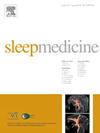The relationship between the vestibular system and the circadian timing system: A review
IF 3.8
2区 医学
Q1 CLINICAL NEUROLOGY
引用次数: 0
Abstract
This review attempts to analyze the relationship between the vestibular system and the circadian timing system. The activity of the biological clock allows an organism to optimally perform its tasks throughout the nychtemeron. To achieve this, the biological clock is subjected to exogenous factors that entrain it to a 24h period. While the most powerful synchronizer is the light-dark cycle produced by the Earth's rotation, research has led to the hypothesis of the vestibular system as a possible non-photic time cue used to entrain circadian rhythms. Demonstrated neuroanatomical pathways between vestibular nuclei and suprachiasmatic nuclei could transmit this message. Moreover, functional evidence in both humans and animals has shown that vestibular disruption or stimulation may lead to changes in circadian rhythms characteristics. Vestibular stimulations could be considered to act synergistically with other synchronizers, such as light, to ensure the entrainment of biological rhythms over the 24-h reference period.
前庭系统与昼夜节律系统的关系综述。
这篇综述试图分析前庭系统和昼夜节律系统之间的关系。生物钟的活动使生物体能够在整个黑夜中以最佳状态执行其任务。为了实现这一点,生物钟受到外源性因素的影响,使其以24小时为周期。虽然最强大的同步器是由地球自转产生的光暗循环,但研究已经提出了前庭系统作为一种可能的非光时间线索用来引导昼夜节律的假设。证实了前庭核和视交叉上核之间的神经解剖学通路可以传递这一信息。此外,人类和动物的功能证据表明,前庭干扰或刺激可能导致昼夜节律特征的变化。前庭刺激可以被认为与其他同步器(如光)协同作用,以确保在24小时的参考周期内生物节律的参与。
本文章由计算机程序翻译,如有差异,请以英文原文为准。
求助全文
约1分钟内获得全文
求助全文
来源期刊

Sleep medicine
医学-临床神经学
CiteScore
8.40
自引率
6.20%
发文量
1060
审稿时长
49 days
期刊介绍:
Sleep Medicine aims to be a journal no one involved in clinical sleep medicine can do without.
A journal primarily focussing on the human aspects of sleep, integrating the various disciplines that are involved in sleep medicine: neurology, clinical neurophysiology, internal medicine (particularly pulmonology and cardiology), psychology, psychiatry, sleep technology, pediatrics, neurosurgery, otorhinolaryngology, and dentistry.
The journal publishes the following types of articles: Reviews (also intended as a way to bridge the gap between basic sleep research and clinical relevance); Original Research Articles; Full-length articles; Brief communications; Controversies; Case reports; Letters to the Editor; Journal search and commentaries; Book reviews; Meeting announcements; Listing of relevant organisations plus web sites.
 求助内容:
求助内容: 应助结果提醒方式:
应助结果提醒方式:


